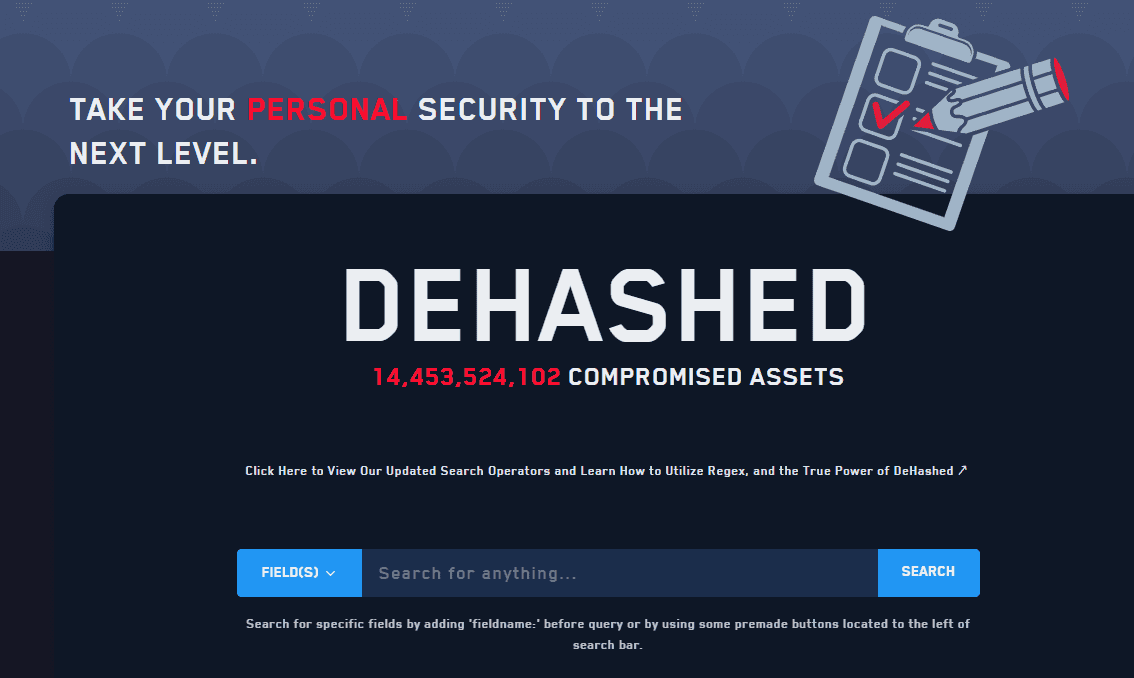

Updated · May 24, 2023
Updated · May 20, 2023
With over six years of writing experience, Darko is a prolific writer in multiple industries includi... | See full bio
The Internet is a global community of computer networks with over 5.16 billion users globally. It is used for communication, shopping, financial transactions, entertainment, and research.
Any personal information that is made public finds its way to the Internet. It can be through state public records, social media accounts, and even your online purchases.
However, the Internet is also a gateway to your personal data for people with malicious intent. Each day, around 2,244 cyberattacks happen, and 30,000 websites are hacked.
To avoid any risk, you can consider deleting yourself from the Internet. It sounds impossible, but this article will help you learn how to do that. Let’s dive in.
Internet users lost $5.8 billion in 2021 due to identity fraud, which is a 70% increase compared to the previous year. In 2022, 27 million Americans became identity theft victims and lost $28 billion.
The numbers continue to rise as more personal information from the web is made accessible.
Your digital footprint exposes a lot about you. Any online activity can tell pieces of information about you — from phone numbers to email addresses.
Extracting your personal information from the Internet is time-consuming. However, it reduces your risk of being a victim of cyberattacks like hacking and identity theft.
Here are simple ways you can delete your data from the Internet:
Data brokers are known to harvest your personal information. They usually gather publicly-obtainable data like federal and state records. Its full market size is now valued at over $276 billion.
While data broker sites help you find someone on the Internet with just a piece of lead — like name and phone number, this information is also prone to theft.
Thankfully, data removal sites exist to help. These tools remove your personal information from multiple data broker sites simultaneously.
The following are some removal tools you can consider:
Incogni is a data removal service that lets you take control of your privacy.
It will help remove your personal information from over 180 data broker sites. This helps you save the time and effort of sending removal requests manually to each site.
To start using this service, follow these steps:
Incogni’s subscription plan is available in monthly and yearly options. The monthly plan can cost you $12.99, while the annual plan is $6.49 per month.
After completing the payment, Incogni will contact the data broker sites. Typically, a site will respond to the removal request within a week.
The entire process will take a couple of months. Incogni will send you weekly updates regarding the status of each removal request.
Another data removal service to use if you want is OneRep. They offer a service that deletes your data from more than 190 data brokers.
The tool also offers a self-removal service for 5 days. If you prefer an easy fix, they can automatically send removal requests on your behalf.
Here's how you can use OneRep:
OneRep will execute a scan to find your personal data in broker sites. You will have two options to choose from.
You can remove your personal information yourself or leave the entire work to the OneRep team by purchasing a subscription.
One piece of information that interests hackers is your IP address. It is a good lead that shows your digital footprint. It can reveal your browsing history, cookies, and even data cache.
Concealing your IP address is possible by using specialized privacy tools like VPN. A Virtual Private Network (VPN) lets you encrypt your internet traffic, leaving hackers clueless.
|
NOTE: Countries have different VPN laws. We do not promote ILLEGAL activities, so please check the legality of VPNs in your country before using them. |
There are many VPNs to choose from out there. Some of the great choices are:
NordVPN is one of the most reputable VPNs in the online privacy market. Their service is known to have strong security features and excellent speed.
This VPN offers a secure tunneling protocol to ensure your personal information is safe while exploring the web. It also has expansive coverage with over 5,000 servers worldwide.
One feature that makes NordVPN credible is its kill switch. It comes with two: the Internet Kill Switch and App Kill Switch.
These two options will ensure your personal data will not leak on the web. It allows you to hide your digital footprint as you browse.
To use NordVPN, follow these steps:
NordVPN is free to use for up to 30 days. After this duration, you can choose a monthly, yearly, or even a 2-year subscription plan for as low as $3.99.
If you prefer a free VPN service, you can use Windscribe as an alternative.
Other than hiding your internet traffic, Windscribe also comes with ROBERT. This is a feature that blocks ads, malware, trackers, and phishing attempts.
To start using Windscribe, here are the following steps.
Windscribe will mask your IP address with a new one. This protects your data because your online activity is now unrecognizable.
You can use Windscribe's free features for a limit of 10GB per month. It also offers a paid plan for more features and unlimited bandwidth for only $5.75 monthly.
Social media is a vital part of everyone’s lives in today’s digital age. With more than half the population having online accounts, an average person spends 2.5 hours on social media.
Usually, apps collect user information to make the customer experience better. However, the same social media apps that you spend so much time on can be the same apps that sell your personal data.
Some apps use your information for profiling. They gather details about you based on your online activity. The accumulated data is shared with different companies for marketing purposes.
According to pCloud, 79% of your personal data is being shared by Instagram with third-party companies. Facebook and LinkedIn follow this.
You can’t just delete your social media to protect your data. However, you can take preventive measures to regulate your social media activities.
With more than two billion users, Facebook is one of the most extensive social networks. Let’s use it as an example to know how to adjust your Privacy Settings:
Keep Your Location Data PrivateYou can find your location data on your device’s settings. Adjusting it won’t prevent Facebook from accessing your location. However, it will not show your precise location. On Android, go to your phone’s Settings > Location > App location permissions. Select Facebook. Click Allow only while using the app or choose Deny. This also works in newer iPhones. Go to Settings > Privacy > Location Services > Facebook. You can choose Never or While using the app. |
Avoid Using Your Facebook Account To Sign UpUsing your Facebook account provides an easy way to sign in to any website. However, Facebook collects more personal data as you do this. Removing your personal information from companies is impossible. However, you can still see what apps on your computer are harvesting your personal data. Clearing and reducing the apps linked to your Facebook account lets you control your online activity. Log in to your Facebook Account. Go to Settings and Privacy > Settings > Apps and Websites > See More. Click on the box next to the app’s name and select Remove. |
Make Your Profile Harder To FindOne method that lets you access Facebook without revealing your true identity is by using aliases. This will anonymize your profile, making it exclusively accessible to people who know it. Facebook also has this default feature that lets your profile appear on Google search results. On your account, go to Settings and Privacy > Settings > Privacy. Click Do you want search engines outside of Facebook to link to your profile? and Edit. Switch it off. You can also change the reach of your posts and account details to Only Me to prevent anyone from seeing your Facebook profile. |
Google holds a lot of information on almost everyone on Earth. If you type a name on the search bar, you will see a list of data about that person on Google search results.
This could be a good thing if it is used with good intentions. However, not all of us are comfortable with being found on search engines.
Fortunately, Google offers an option to send a removal request to let anyone delete any personal data on a website. Here’s a step-by-step guide on how to do it:
After you submit the removal request, Google will remove your personal information from the web page. Google may send you an email if they need more details.
Even though Google has a secure system, hackers can still find ways to access all sorts of information from the web. They can resort to phishing, social engineering, and other sophisticated tactics.
If you think this makes your data vulnerable, you can erase it from t
he Internet. One tool that is known to accomplish this task is DeHashed.
It is a cybersecurity company that is in the business of managing your online reputation.
If you want to use DeHashed to delete yourself from the Internet, follow these steps:

DeHashed offers two options. You can let your compromised profiles stay as they are, or you can remove them entirely from the internet.
The latter can cost you money, but the result is worthwhile. DeHashed offers a monthly plan for $15 and an annual one for $179.99.
Your personal information is not just a cliche on the Internet. Anyone can use it for purposes that best fit their interests. Sometimes, it comes with bad intentions.
However, you can control your online activities or even remove your information from the Internet to protect your online privacy. The methods mentioned above can help you reduce the risk of being a cyberattack victim.
Leaving your personal data on the Internet puts you at risk for identity theft. Being a victim of identity fraud can affect your life — socially, mentally, and financially.
Simply enter your name in the search bar and explore each Google search result.
Regulate your social media activity and make your profile inaccessible via Google search. To secure your internet activity, use a VPN to encrypt your traffic and avoid leaking your personal information.
Darko Jacimovic
With over six years of writing experience, Darko is a prolific writer in multiple industries including, but not limited to, technology, digital marketing, and finance. Acquiring a BA in English pushed him to pursue his lifelong dream to conquer the internet and take over the SERPs with high-quality content. Darko became an expert in technology the hard way—he broke a lot of computers and cellphones. Now, he tries to give back to the community by crafting some of the most popular tech guides and articles on the World Wide Web.
Latest from Author
Your email address will not be published.
Updated · May 24, 2023
Darko Jacimovic
Updated · May 24, 2023
Updated · May 24, 2023
Muninder Adavelli
Updated · May 24, 2023









